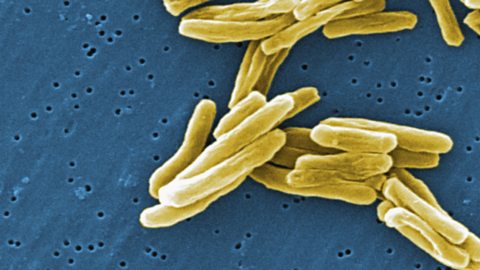Bacterial diseases
Not all bacteria are pathogenMicroorganism that causes disease. which cause diseaseIllness affecting plants and animals.. Many bacteria, like those found in the intestines, are useful. All bacteriaSingle-celled microorganisms, some of which are pathogenic in humans, animals and plants. Singular is bacterium. are prokaryoteA single-celled organism which does not have a membrane-bound nucleus., and do not have a nucleusThe nucleus controls what happens inside the cell. Chromosomes are structures found in the nucleus of most cells. The plural of nucleus is nuclei.. Unlike virusesUltramicroscopic non-cellular organisms that replicate themselves inside the cells of living hosts., bacteria are cells and so are larger but cannot be seen without a microscope.
Cholera
Cholera is a bacterial infection often transmitted in dirty water or contaminated food. The symptoms of infected people include:
- diarrhoea
- feeling and being sick (vomiting)
- stomach cramps
Having diarrhoea and vomiting mean infected people quickly become dehydrated and can go into shock. Large outbreaks of cholera are often found shortly after natural disasters or during armed conflict. Thousands of people currently die each year of cholera.
A vaccine prevents cholera infection. If infected, treatment involves taking oral rehydration solutions to prevent dehydration and shock. The solutions have salts and glucose in them to help replace those lost in diarrhoea and vomiting. Antibiotics are also used.

Tuberculosis
Tuberculosis (TB) is a bacterial infection spread in tiny droplets when a person coughs or sneezes. So it is an airbourne disease. Tuberculosis mainly infects the lungs where it causes damage. Symptoms include:
- a bad cough often resulting in coughing up blood
- loss of appetite leading to weight loss
- high temperature
- tiredness and fatigue
Tuberculosis is caused by the bacterium Mycobacterium tuberculosis. Many healthy people have an immune systemThe body's defence system against entry of any foreign body, including pathogens and agents such as pollen grains. The role of the immune system is to prevent disease. that is strong enough to kill any infecting bacteria. If patients have other diseases or a weakened immune system they are more likely to catch TB.
The BCG vaccine prevents infection with TB. If infected, antibiotics are prescribed.

Stomach ulcers caused by Helicobacter
Helicobacter pylori is a bacterium which can cause stomach ulcerOpen sores that develop on the lining of the stomach and are usually caused by bacteria.. It is a common infection and many people who are infected show no symptoms. The bacteria simply live in the stomach lining without causing ulcers. Transmission from an infected person is through saliva.
For some people, infection by H. pylori starts to irritate the lining of the stomach which then stops protecting them from the hydrochloric acid in their stomach. This irritation forms an ulcer. We don't yet know why some people are more likely to develop ulcers.
Some lifestyle factors such as spicy food, stress, excessive alcohol and smoking can increase the risk of stomach ulcers.
Symptoms of stomach ulcers include:
- indigestion
- heartburn
- loss of appetite and weight loss
Antibiotics can be used to treat stomach ulcers shown to be caused by Heliobacter pylori.
Greg James explains the causes of food poisoning and how to prevent foodborne illness